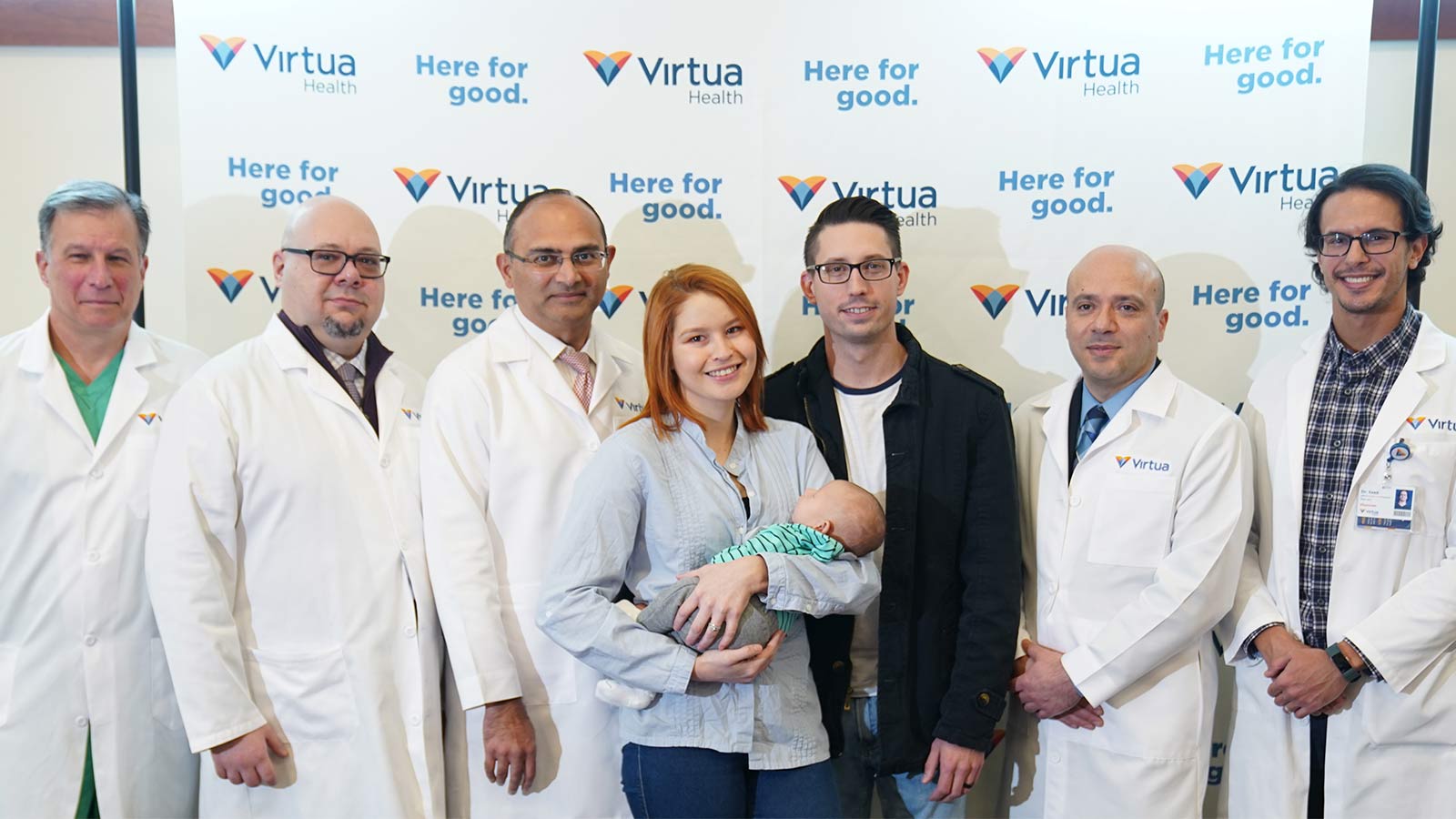How Do I Get Rid of This Back Pain for Good?
The path to back pain relief isn't always clear, but the best first step is getting an accurate diagnosis. Learn what to do when at-home treatments no longer cut it.

By Benjamin Duckles, MD, Anesthesiologist/Pain Management Specialist, Pain Management
If you’re one of the millions of people in the United States living with low back pain, you know the impact it can have on your quality of life. You’re also probably familiar with how difficult and time-consuming it can be to get the treatment you need to resume your daily activities. Today, let’s discuss the ins-and-outs of back pain, where it might come from, and what to do about it.
Why is getting the right lower back pain treatment so challenging?
One reason is that many people don’t know where to start. If you’ve been treating your back pain with rest, warm compresses and over-the-counter medications like ibuprofen, you might wonder how long you should wait before seeing a healthcare professional. Like most, you’re probably not even sure if you should see your primary care doctor, a spine specialist, an orthopedic surgeon, or a physical therapist.
The path to getting the right help is not always clear, but the best first step is getting an accurate diagnosis. That means seeing your primary care doctor or a back specialist first.
What causes lower back pain?
Lower back pain affects 80 percent of adults at some point in their life and can come in many forms—from a dull and continuous muscle ache, to a sharp stabbing feeling that comes and goes.
Your lower back pain may be the result of a minor injury, or the normal wear and tear of aging. Or, it may be linked to a new or strenuous activity that strained your muscles or ligaments. But some types of lower back pain can be a sign of something potentially more serious, including:
- Arthritis
- Herniated disc
- Compression fracture
- Tumors
- Infection
- Spinal irregularities like scoliosis or spinal stenosis
When do I need to see a doctor for back pain?
Low back pain resulting from minor injuries or normal wear and tear often is treated successfully at home with ice, heat, stretching, low-impact activity, rest, and over-the-counter pain relievers. However, you should see a doctor for back pain in the following cases:
- The pain affects your quality of life and ability to work.
- You’ve had a fall or other impact accident.
- The pain is severe or doesn’t begin to improve after a few days of at-home remedies.
- The pain radiates to your arms or legs.
- The pain causes weakness in your arms or legs.
- The pain leads to new bowel or bladder problems.
- You have an unexplained fever.
- You have a history of cancer.
Earlier treatment leads to better outcomes for people with low back pain, so don’t wait to contact your primary care provider or a specialist.
How is lower back pain diagnosed?
Your doctor will assess your ability to sit, stand, walk, and move your legs. The doctor also will ask you a number of questions, including what you were doing when the pain first started, if anything makes it better or worse, and how long you’ve had it.
Your doctor might order imaging tests such as x-rays or MRIs, nerve studies, blood tests, or bone scans to help identify the cause of your low back pain. In some cases, your primary care provider may refer you to a specialist like an orthopedist, a spine specialist, or a sports medicine doctor for additional testing or treatment.
What treatments are available for low back pain?
At Virtua, our back specialists start treatment using the least invasive options available. If those don’t prove successful, your treatment plan may change to include more aggressive approaches. Treatment recommendations may include:
Physical therapy: Physical therapy treats low back pain with stretching, strengthening exercises, and soft-tissue techniques that relieve pressure on your spine. A physical therapist can show you how to move, sit and lie down to reduce the stress on your low back. Many people improve significantly with physical therapy.
Medications: Anti-inflammatories like ibuprofen can provide pain relief. However, taking medication is generally not enough to provide long-term pain relief on its own, so doctors often combine it with other therapies.
Image-guided epidural steroid injections: Steroid medication (an anti-inflammatory) is injected into the area around the discs in your spine to relieve inflammation and pressure that’s causing nerve pain. Injections frequently are used to reduce pain intensity while your body heals the injured disc.
Trigger-point injections: These can be used to relieve pain associated with specific knots in your muscles or connective tissues called trigger points. Delivering medication directly into the trigger point relaxes it and relieves pain.
Surgery: Some patients with lower back pain who don’t get relief from non-invasive therapies may benefit from surgery. Your surgeon will make sure that you get the best possible result with the least invasive procedure. Depending on the cause of your lower back pain, surgical options include:
- Spinal fusion. The most common surgery for chronic back pain with degenerative changes, the surgeon fuses together the spinal bones (vertebrae) to limit motion and stabilize injured spinal segments.
- Laminectomy. The surgeon removes bone, bone spurs, or ligaments in the back to relieve pressure on the spinal nerves.
- Foraminotomy. Used to relieve pain from a compressed nerve in the spine, the surgeon widens the space where nerves exit the spine by removing some of the disc and surrounding bony structures.
- Discectomy. A disc that has slipped out of place can press on a nerve and cause back pain. In a discectomy, all or part of the disc is removed.
There’s no need to endure back pain. Download the Virtua Health Guide to Back Pain, or call 856-246-4272 to request a consultation with a Virtua back pain specialist.
There's So Much More to Explore
Discover expert insights, inspiring stories, health tips, and more by exploring the content below!

How Can I Prevent Bone Loss and Osteoporosis?
Is an At-Home Colon Cancer Test a Good Alternative to a Colonoscopy?

What Should You Do if You Slip, Fall, and Hit Your Head?

How Do You Manage the Side Effects of Weight-Loss Medications?

Which Weight-Loss Option is Best for Me?
Achieving and maintaining a healthy weight is not the same for everyone. Our Complete Weight Management Program offers choices and support to achieve your weight-loss goals.
A Woman’s Four-Step Guide to Fight Back on Back Pain

What You Need To Know About Carpal Tunnel Syndrome

The Truth About Menopause, Weight Gain, and Belly Fat

Shedding Light on Lesser-Known Menopause Symptoms and Solutions

Debunking The Myths About Vaginal Dryness
Inside Look at Blood Vessels Aids PAD Treatment
Denise Davis: Pay Attention to Your Heart Health

What You Need To Know About Stroke Treatment

10 Smart Ways to Manage Your Diabetes

Signs You May Have Chronic Kidney Disease

5 Essential Winter Foot Care Tips When You Have Diabetes

Sweet Music: Trust, Teamwork Save Justin from Heart Attack

Complex Heart Surgery Nets James a Lifelong Friend

Your 10-Point Plan to Avoid Winter Weight Gain

Hepatitis C Kidney Transplant a Blessing For Lee Manns

7 Reasons Why You Want Your Surgeon to Be an Expert in Robotics

Colitis Symptoms Under Control, Jennifer Is ‘Living My Best Life’

How Do I Care for a Wound that Won't Heal?

Five Back Pain Risk Factors That You Should Know

Is My Back Pain Normal, or Is It Spinal Stenosis?

Robotic Hernia Surgery Combines Innovative Techniques With Faster Recovery Times

5 Back Stretches for the Work-From-Home Workweek

How Does Breast Density Affect Your Mammogram?

Menopause: New Insights Into the Power of Hormone Replacement Therapy
Signs You Should Get Treated For Vein Problems

One New Heart Valve Saves Two Lives in the Tritten Family
What You Need to Know About Heart Failure

6 Numbers Key to Keeping Your Heart Healthy
Lung Valve Surgery Relieves COPD, Emphysema Symptoms

4 Easy Ways to Treat and Prevent Runner's Knee

Lung Screening, Robotic Technologies Get Pat Kicking Up Her Boots Again

Breast Cancer Diagnosis Inspires Catherine to Help Others

Jasmine’s On-Air and Pain-Free After Gallbladder Surgery

When Should I See a Doctor About My Knee Pain?

Quick Action Leads to Jesse's Recovery From Stroke

A Non-Athlete’s Guide to Shoulder Overuse Injuries
Shoulder problems aren’t limited to athletes. Virtua orthopedic surgeon Sean McMillan, DO, explains shoulder overuse injuries and prevention in this article.

A Non-Athlete’s Guide to Shoulder Overuse Injuries

Wide-Awake Hand Surgery Speeds Recovery, Puts Control in Patients' Hands

South Jersey Veteran Thrives After Cross-Country Kidney Donation

Five Mindfulness Tips That Can Help Heal Your Heart
Working from Home? Take a Quick Break to Stretch Your Wrists

3 Ways to Avoid Knee Pain

When Should I See a Doctor for My Hip Pain?

When Should I See a Doctor About My Shoulder Pain?

Is My Back Pain Normal, or Is It Sciatica?

Is My Back Pain Normal, or Is It a Herniated Disk?

When Is It Back Pain, and When Is It Something More?

Watchman Heart Device: a Technological Breakthrough for Blood Clot Prevention

Albert's Emergency Cardiac Surgery Is a 'Story of a Lifetime'

What Can I Do Right Now About My Aching Back?

How Do I Get Rid of This Back Pain for Good?

Can Your Gut Health Affect Your Heart?

When Should I Be Worried About My Neck Pain?
Advanced Heart Failure Therapies Get Bernadine Back to Full Speed

Sarah Wins Back Her Health After Crohn's Disease Diagnosis

Overcoming Addiction, Philip Now Sees More Positive Side to Life
Firefighter's Successful Lung Cancer Care at Virtua
A Lung Screening Put Teresa Back in the Race

A Breast Self-Exam Saved Kristen's Life

Early Treatment is Best to Relieve Hemorrhoid Symptoms

The Top 10 Foods For A Healthy Diabetes Diet

Keeping the Beat: Advanced Heart Surgery for Aortic Aneurysm

Are You At Risk For Chronic Kidney Disease

Local Pastor Makes Kidney Health Mission of Ministry
What’s the Difference Between Type 1 and Type 2 Diabetes?

All for Bear: Dan Loses Weight to Be His Son’s Kidney Donor

Augmented-Reality Surgery Has Bobby Back on Stage, Rocking His New Hip

Hyperbaric Wound Therapy Puts Joette Back in Motion

Robotic Hernia Repair Renews David's Active Lifestyle

